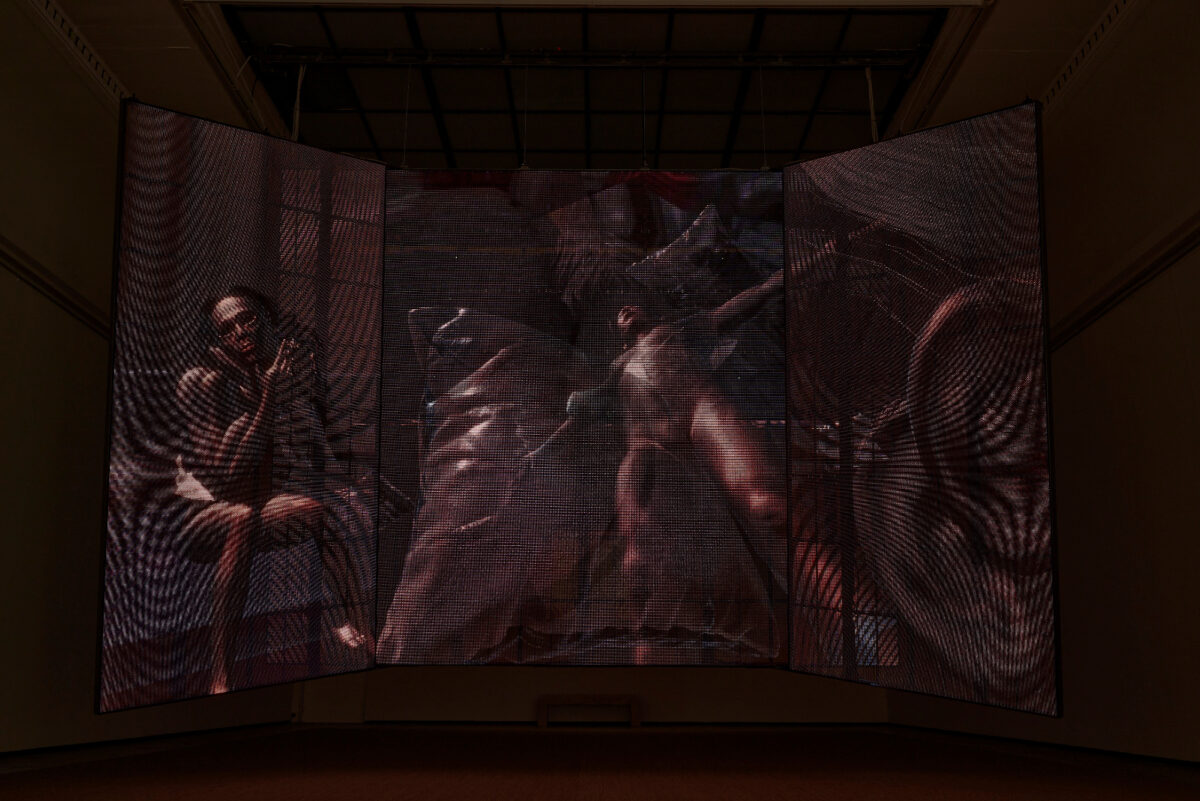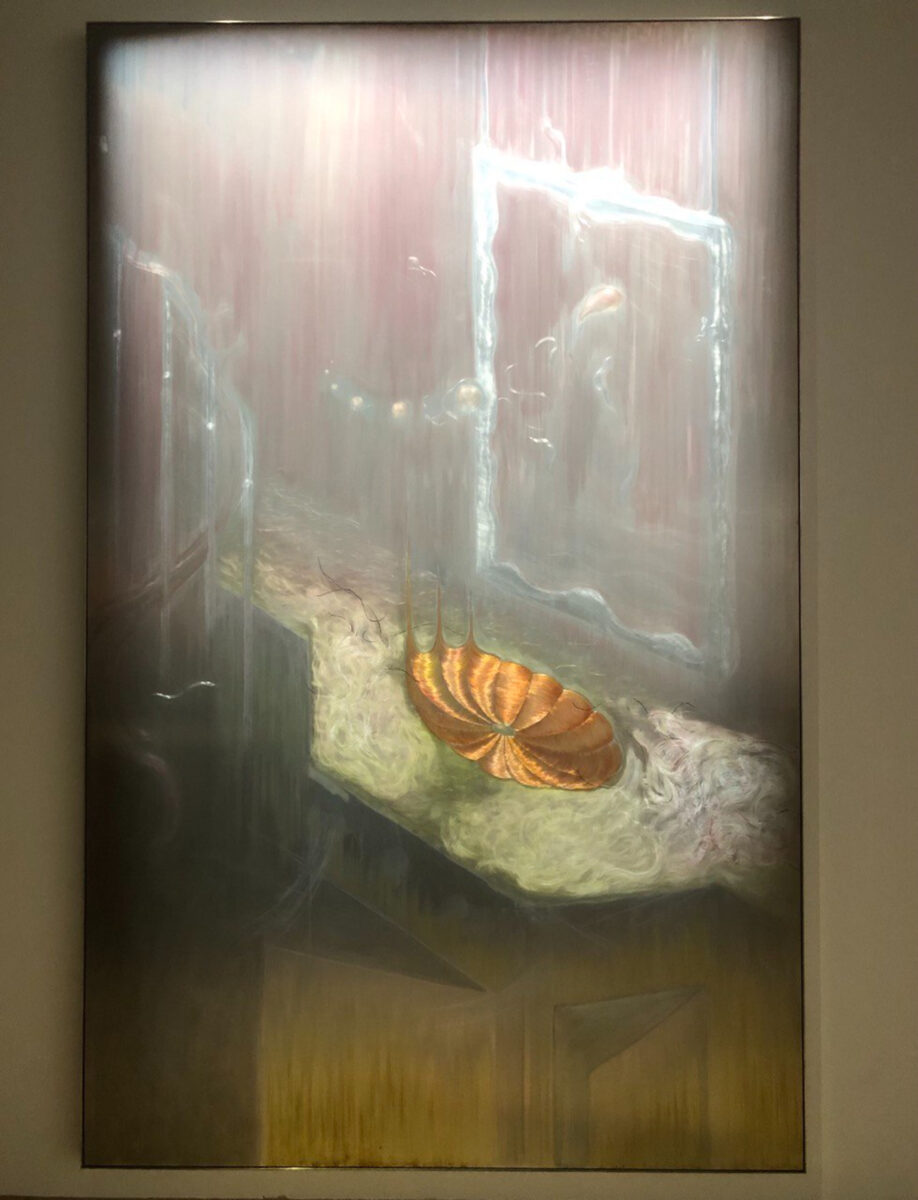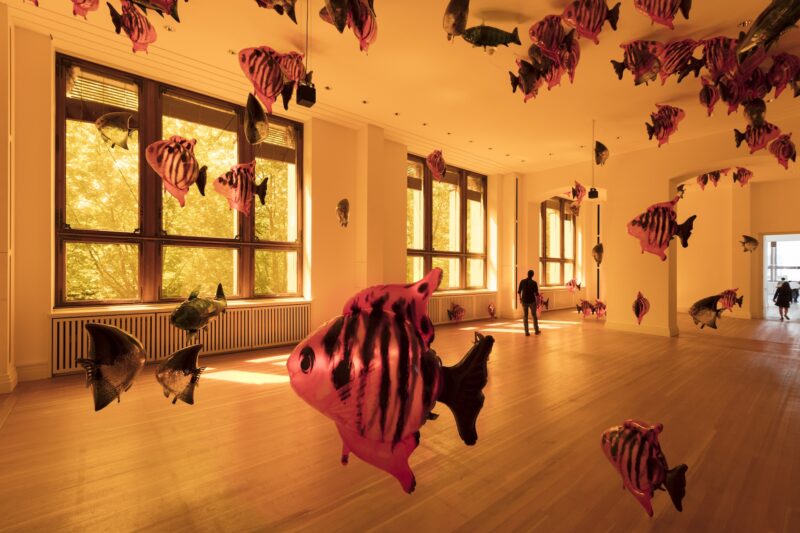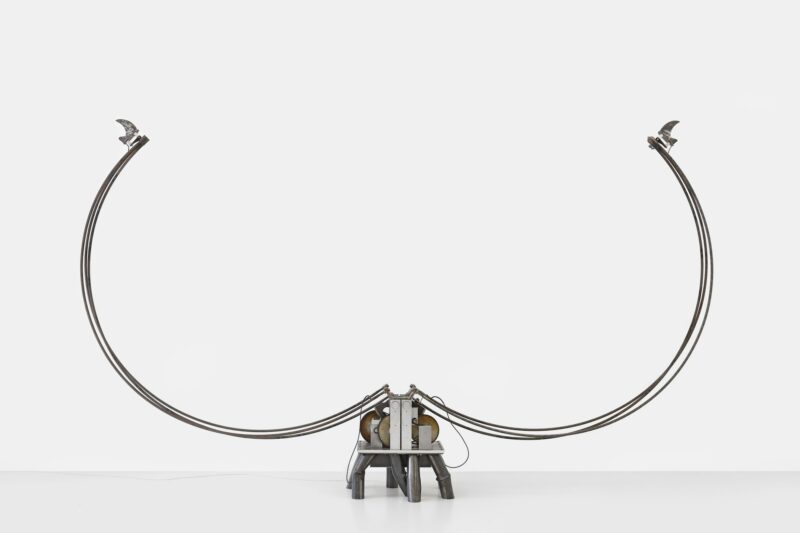Unfixed, fluid and a-static. WangShui at Haus der Kunst, Munich. Opening as part of Various Others.
Let’s suspend the narrative. Toleranzfenster [Window of Tolerance], WangShui’s first institutional exhibition in Europe, is a super-real entanglement. Centred around an artificial intelligence screenplay, here video and painting interweave, creating an anomalous encounter. Embracing both science fiction and reality television, the unfolding of this play is free from any overtly dictated direction; there are no lines as such in this narrative, rather the artworks in Window of Tolerance act as screens which invite us to peer as addicted voyeurs—free yet mediated and all caught up in the wonders of wayward looking.

Certainty of the Flesh, 2023 personifies this inviting sense of absorption. A large three-screen video installation, presented like an altarpiece hovering high within the space of the gallery, the work depicts a number of androgynous avatars writhing. Visually, cutting close-ups with full-body scenes and all set to an ambient SimsCity-esque soundtrack—one that seems to morph in its looping of percussion and tingly woos—these protagonists dance, all desiring and distant, before morphing into syncopated souls haunting a bronze-toned space. Far more than a digital depiction of louche go-go dancers, the visuals of WangShui’s video draw upon science fiction, Chinese philosophy and reality television. Fed through machine learning programmes, these seemingly disparate sources ambiguously dissolve into one another, giving the video a high-faux sensuality and surreal tone. On a theoretical level, to me this dissolving alludes to how humans are innately multiplicitous beings (we are multiplicities to riff off continental philosophy) and further to how as beings, alive within an evermore digitally directed age, the play of our lives is becoming evermore determined by technological superstructures. That is, how the addictive, scripted-unscripted, artificiality of reality television is becoming symbiotic with the real-time play of life.
WangShui’s interweaving of the human and the digital is given a sheening skin in Toleranzfenster. We see this in the translucent LED screens displaying Certainty of the Flesh but more so, and so so wonderfully, in the ‘paintings’ that sit in the gallery adjacent to this non-narrative, narrative body-bronzed fiction. Allusive colour stained scratches in aluminium, here painting is not just about adding a medium to a ground but a restive act of inscription; brush marks transformed into etched lines. I am particularly drawn to the painting titled, False Vacuum [Falsches Vakuum], 2023.

One of Wangshui’s more figurative paintings, False Vacuum seems to depict a grand hallway from an oblique angle. Here, a minimal interior weeps like a dream set in burgeoning mists of bleached-burgundy through hazed grey-blue and beach-beige tan. WangShui’s diamond cut scratch marks not only demark the contours of this space—the curve of a staircase, a storm-like carpet, and a baroque mirror—but become synthetic threads, pulling me into this scene. It’s a disquieting stage; suggestive, almost impressionistic in style, with a tinge of romance and totally surreal. That is, this is a multiplicitous view of a wholly unfixed world-space. As with Certainty of the Flesh, movement within the painting’s composition makes looking an addictive activity—all voyeuristic, I’m pulled in. Pictured centre, we see something like a scalloped light-fitting dramatically falling into the carpet’s crush; scratched streak marks accentuating an impending crash—I can almost hear this. Arching over this inward fall, pearl-like orbs curl out from the painting’s thin skin; the textuality of the scratched aluminium gives these forms a three-dimensional presence.
The act of painting here, alongside the video presentation, emphasises the place of the corporeal body in the play of life. Indeed, to the way our bodies are becoming ever more managed by digital systems; we no longer witness the artificiality of reality on television we experience this scripted-unscripting of life in our flesh. Working upon standard-sized sheets of aluminium (the kind used on industrial construction sites—229 x 109 cm), the fleshy subject matter of WangShui’s paintings emerge through an iterative dialogue with machine learning programmes. Here, WangShui feeds subject matter into an AI, is returned an image, renders this, and then feeds this image through the AI again and again in order to develop recursive works. In this way, the marks inscribed in the aluminium’s skin of the paintings highlight the deeply embedded relationship between humannly labour—living more generally—and the ever-encroaching presence of digital technology in the scripting of our everyday lives.
WangShui, Toleranzfenster [Window of Tolerance] until 10th March 2024 Haus der Kunst







